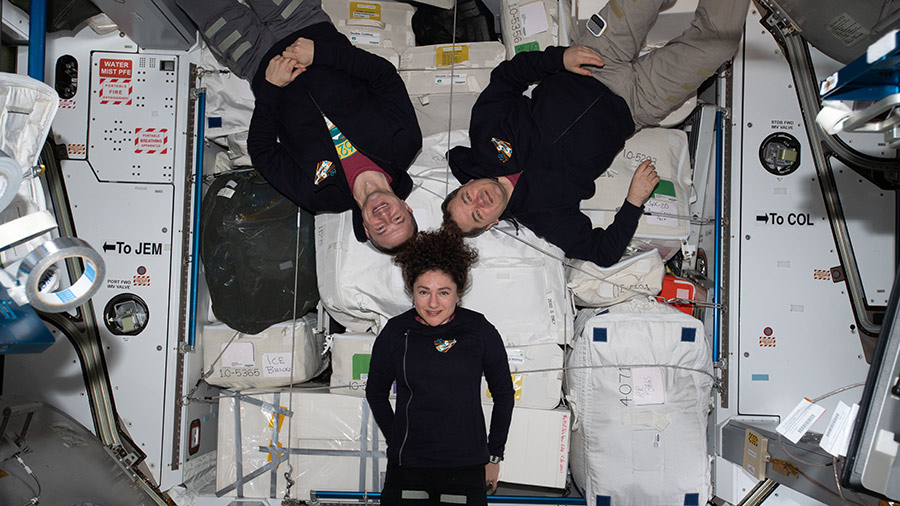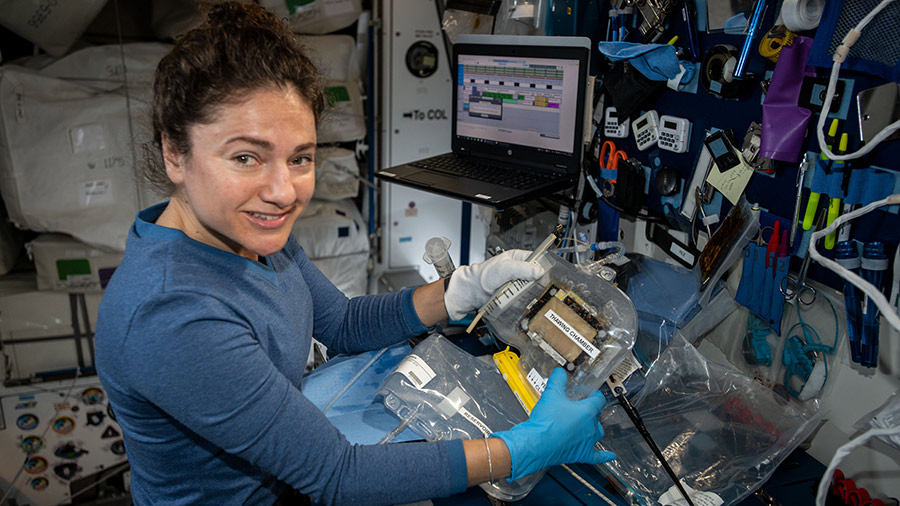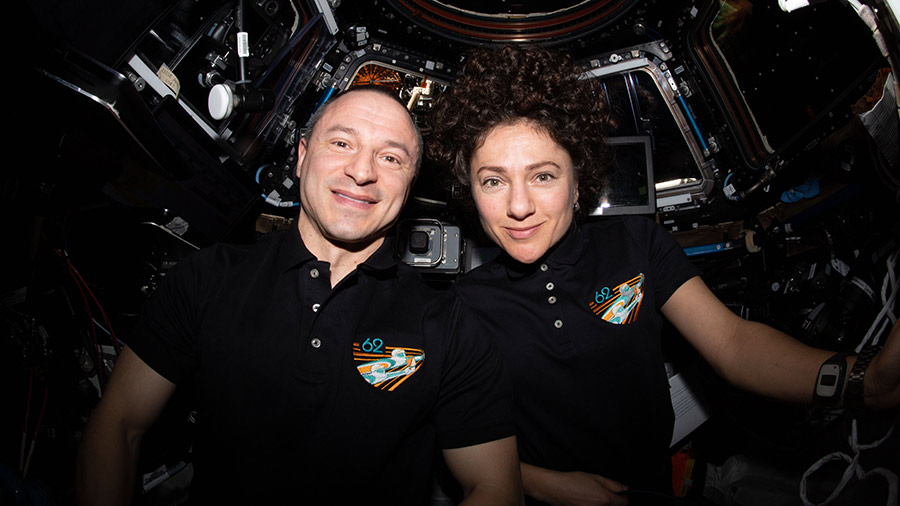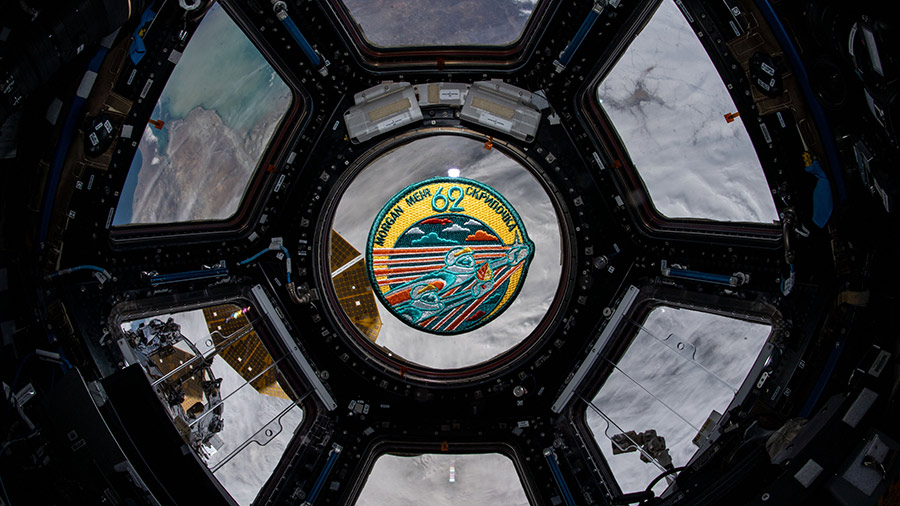Dragon “Go” for Friday Launch; Crew Studies Biology and Physics

NASA and SpaceX mission managers have given the “go” for Friday’s launch of the Dragon cargo ship at 11:50 p.m. EST. The Expedition 62 crewmembers continue to get ready for Dragon’s arrival at the International Space Station on Monday.
Dragon will lift off atop the SpaceX Falcon 9 rocket loaded with fresh supplies to replenish the crew and new experiments including live mice for more space research. NASA astronauts Andrew Morgan and Jessica Meir will be on duty Monday morning inside the cupola to capture Dragon at 7 a.m. EDT with the Canadarm2 robotic arm. NASA TV is covering the launch and capture activities live.
The duo will spend portions of Thursday and Friday brushing up on the robotics skills necessary to grapple the resupply ship as it orbits about 10 meters from the space station. Morgan will lead the capture activities on Monday as Meir backs him up and monitors the spacecraft’s approach and rendezvous.
Meanwhile, research aboard the station is ongoing as the three-member crew explored how microgravity affects biology and physics to benefit humans on and off Earth.
Meir continued test operations on a 3D bioprinter to demonstrate the feasibility of manufacturing human tissue and organs in space destined for patients on Earth. She later nourished bone cells being compared to magnetically levitated samples on Earth. Results could provide therapeutic insights for bone ailments such as osteoporosis.
Morgan started Thursday drawing his blood sample and spinning it in a centrifuge before stowing the collection in a science freezer. Later, he set up experiment gear inside the Microgravity Science Glovebox to study transparent alloys and understand the dynamics and formation of microstructures on Earth.
Commander Oleg Skripochka started the day maintaining power and life support systems inside the Russian segment of the orbital lab. The veteran cosmonaut also spent time Thursday on a pair of experiments researching station ergonomics and crew psychology.
Mark Garcia
Powered by WPeMatico







